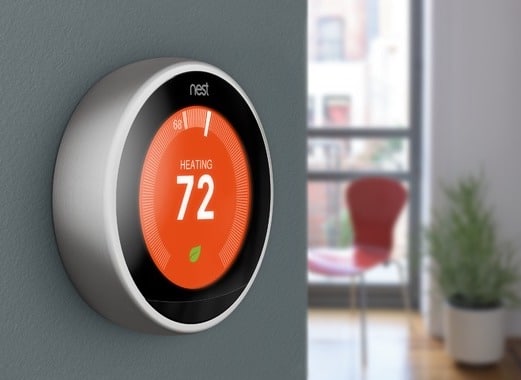
Why smart thermostats became a huge hit
Smart thermostats were the first big success of consumer home automation.
The Nest smart thermostat burst onto the scene and quickly racked up huge sales.
Many of us bought them, loved them, and continue to use them. Naturally, competitors from Ecobee, Honeywell, and a host of others arrived on the scene.
Market experts may analyze why and argue about the details. Was it the price? The design? The features?
I think it is quite simple. Smart thermostats became a huge hit for the following reasons:
Regular thermostats are hard to use. Purely mechanical ones have difficult to read temperature scales and buttons. Basic electronic thermostats have hard to see, unlit, tiny screens with very little information other than temperature numbers and a few cryptic indicators.
Programmable thermostats are virtually impossible to use. Just about all of us gave up and only use them manually.
Last but not least, physically regular thermostats are ugly metal 1960’s design or boring cheap plastic with flimsy buttons or knobs.
Better design and connectivity
Smart thermostats have a better design. The simplicity of the Nest rotating dial has become legendary. It is intuitive and easy to use.
The up and down arrows of other brands are pretty simple and easy to figure out.
Screens are backlit and readable even in bright light and full text status and progress messages are light-years ahead of blinking dots or cryptic abbreviations.
Programming is much easier for automatic schedules and having different weekday and weekend settings.
Smart home connections provide all the settings from the convenience of an app with the larger screen on your phone and work outside your home as long as you are on Wi-Fi or cellular.
Not exactly dumb and dumber?
But have you noticed that our smart thermostats aren’t really all that smart?
We appreciate all the added capability compared to basic dumb thermostats, but remember the advertising and promises made?
Smart thermostats were supposed to use artificial intelligence (AI) to set schedules automatically and override us “dumb humans”.
These smarts were promoted to save us money on our utility bills, help the environment, and make our homes more comfortable.
Why smart thermostats aren’t smarter
There are many different kinds of heating and air conditioning systems. The heating and cooling capabilities vary widely.
Smart thermostats tried to figure out what temperature we wanted and calculated how long it would take to heat up or cool down to get there.
But it doesn’t work. Instead of freezing or burning up, we humans are better at knowing that we want the heat to reach 70 degrees by 8am, we have to turn it on at 6am.
The wide variety in HVAC systems, how their operate, and their quirks of use is just too much for the software engineers or “expert” AI systems they tried to create.
We don’t live alone. Smart thermostats have sensors to detect when we are home or away, but they get totally confused with more than one person living in the same home.
We don’t live in single-room homes. Setting a comfortable temperature when every room in the house is not the same, is impossible for smart thermostats with a single sensor.
So they added extra wireless remote sensors you can place in other rooms. Smart, right? Nope!
You can’t magically convert a single-zone, single thermostat heating or cooling system into multi-zone system just by adding more sensors.
It might be ok if you have a single person and when you move from the bedroom to the family room the smart thermostat switches from one sensor to another, but that doesn’t really solve the problem.
With a single zone, some rooms are going to be hotter or colder than the other. Setting a conformable temperature in one room guarantees the other room isn’t.
As contractors and home owners discovered long ago, multi-zone systems, with at least a different HVAC zone and equipment for different floors or areas of the home, is the only solution that works.
Faced with all these limitations, most of us dumb-down our smart thermostats and disable the useless but fancy features like multi-room sensors and home/away presence detectors.
That doesn’t mean we don’t love them
The interactive controls of our smart thermostats are so much better than the truly dumb ones they replaced.
Setting straightforward daily and weekly schedules of when to turn on, when to turn off, and the desired temperatures is much easier from an app on our phones or a website in our browser.
